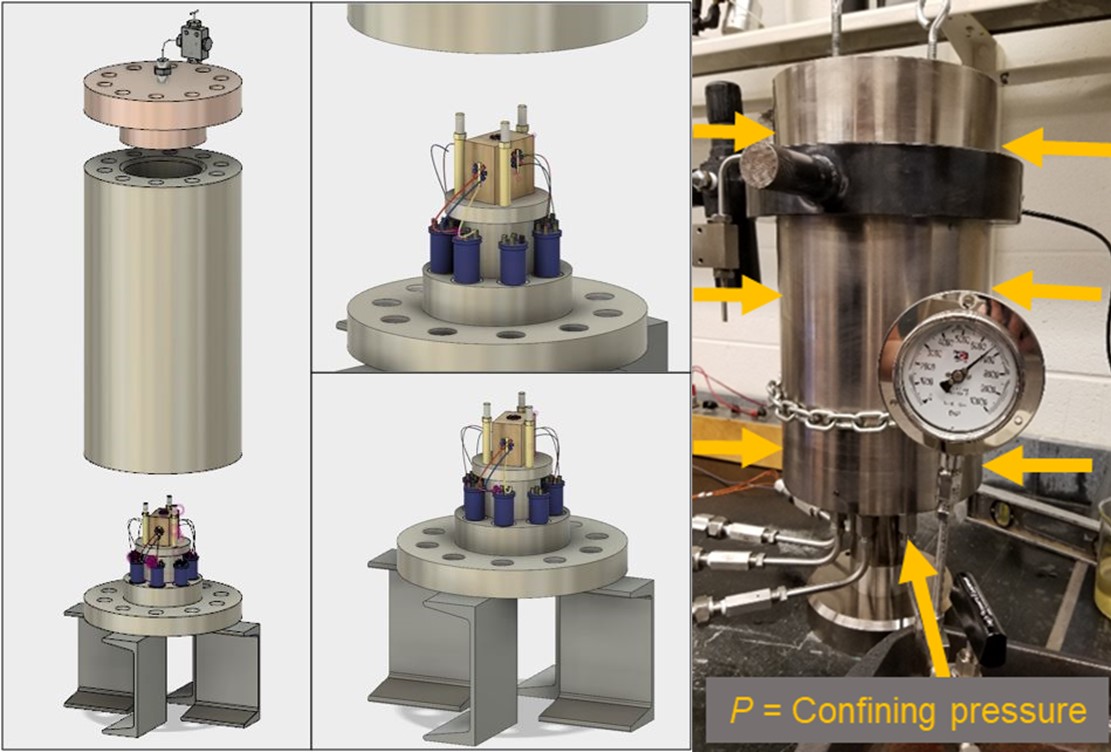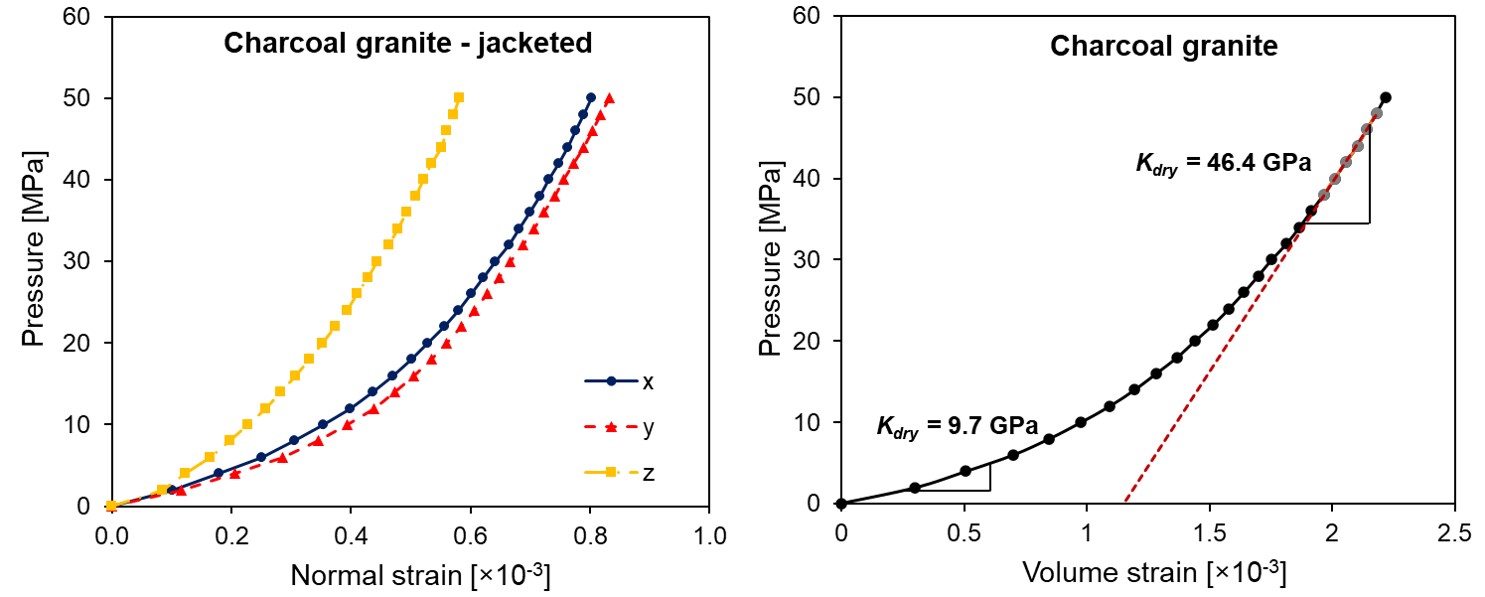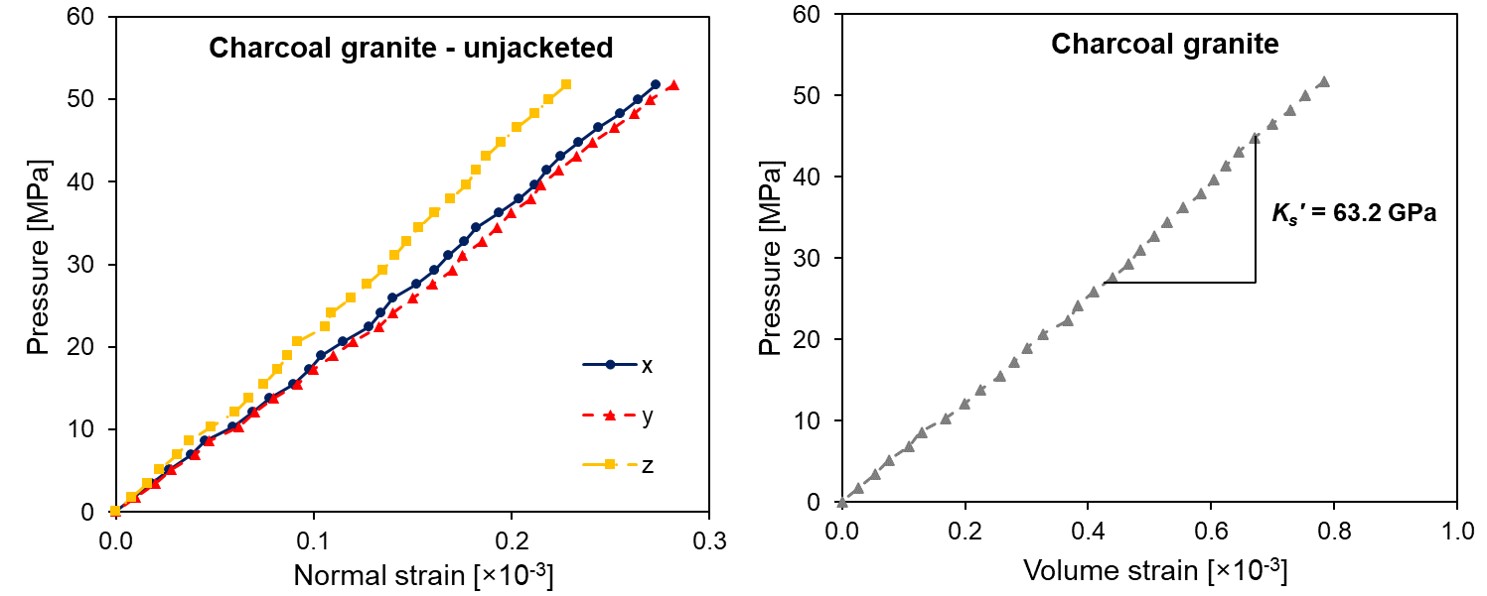The hydrostatic compression cell provides a robust method to determine the bulk compressibility of rock. The pressure vessel is filled with hydraulic oil, where the pressure is controlled by a hydraulic pump with 70 MPa capacity. The pressure transducer measures the hydrostatic pressure, whereas the deformation is obtained locally on the rock specimen surfaces with the sets of resistive strain gages. The drained (dry) and unjacketed bulk moduli can be determined from the jacketed and unjacketed tests, respectively.

- Jacketed test: Dry specimens are covered with polyurethane and hydrostatic pressure is applied for loading and unloading in order to measure the drained (dry) bulk modulus K.


- Unjacketed test: After conducting the jacketed test, the polyurethane membrane is carefully removed with the strain gauges preserved, which allows the confining fluid to intrude into the pores of the specimen. A hydrostatic compression test is then repeated for loading and unloading. Thus, from the strain gauge responses, the unjacketed bulk modulus (Ks’ ) can be measured.


